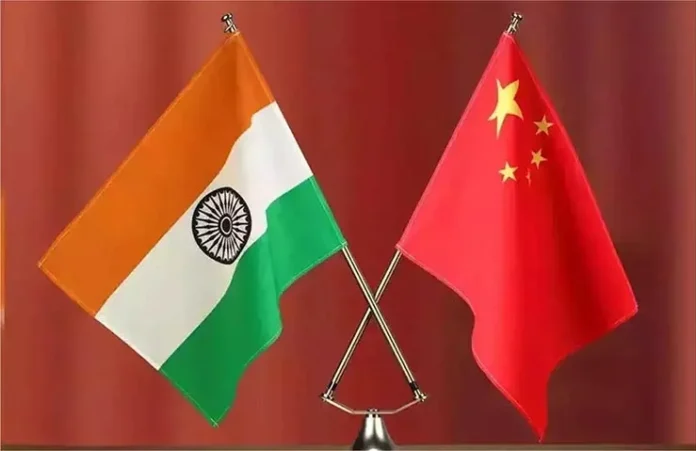Grey zone warfare is often described as the ambiguous and murky realm that exists between outright conflict and peace in international relations. In this space, both state and non-state actors engage in campaigns that utilise a blend of non-military and quasi-military tools, intentionally designed to remain below the threshold of armed conflict. These campaigns can include a range of activities such as nefarious economic actions, influence operations, cyber-attacks, mercenary activities, assassinations, and disinformation campaigns. Additionally, election meddling, economic coercion, and the weaponisation of migrants have become increasingly prevalent aspects of grey zone warfare.
The concept of grey zone warfare is far from new; it has been an enduring instrument of statecraft alongside conventional warfare. The Indian philosopher and strategist Kautilya, in his seminal work Arthashastra, discusses Tushnimyuddha or silent warfare. This form of warfare encompasses covert actions against enemies, including perception management, subtly creating discord among the target population, and employing secret agents to eliminate or quietly subdue adversaries. Similarly, the Chinese philosopher Sun Tzu, in The Art of War, highlights the importance of grey zone tactics, which he describes as techniques for achieving victory without engaging in direct conflict. Sun Tzu advocates for the use of espionage, deception, and the erosion of the enemy’s will to fight through psychological means.
Grey zone warfare typically exhibits five key characteristics. Firstly, it remains below the threshold that would justify a military response, as it primarily employs non-military tools. Secondly, grey zone warfare unfolds gradually over time, rather than through a single decisive action, aiming to achieve its objectives incrementally. Thirdly, the actions involved may not always be clearly attributable to the perpetrator, adding to the ambiguity and deniability. Fourthly, the perpetrator may collaborate with other state actors to strategically isolate and corner the adversary. Finally, grey zone tactics often exploit specific vulnerabilities of the adversary, with the aggressor calculating that strong responses are unlikely due to the target’s political constraints or strategic uncertainties.
Chinese hackers have intensified cyber-attacks on Indian infrastructure, targeting key sectors such as healthcare and energy. In March 2021, Chinese hackers attacked the Serum Institute of India and Bharat Biotech, key players in India’s COVID-19 vaccine initiative
China’s Grey Zone Warfare Tactics
Grey zone warfare is a cornerstone of China’s strategy to expand its influence globally and to establish a China-centric order. China’s economic rise has been paralleled by a growing strategic assertiveness, often described as anything but peaceful. China has employed grey zone warfare to further its domestic, economic, foreign policy, and security objectives, particularly in the Indo-Pacific region. In Chinese discourse, these activities are often referred to as Military Operations Other Than War (MOOTW).
Since the early 2000s, China has gradually increased its assertiveness. Initially, it justified its claims over the Spratly and Paracel Islands in the South China Sea on historical grounds. In 2009, China asserted “indisputable sovereignty” over the South China Sea through a map depicting the controversial nine-dash line. Subsequently, China began deploying its maritime militia, masquerading as fishing vessels, to conduct hit-and-run operations against smaller nations with comparatively weaker naval capabilities.
As these manoeuvres went largely unchecked, China expanded its claims to include territories under the sovereignty of Japan and South Korea. The most pronounced example of China’s grey zone warfare tactics is evident in its approach to Taiwan. China claims Taiwan as its own territory and has long sought to intimidate it into submission through military drills in the vicinity of the island. These drills often include Chinese fighter jets flying over Taiwan’s Air Defence Identification Zone (ADIZ) and Chinese vessels entering Taiwan’s Exclusive Economic Zone (EEZ). While these exercises are clearly threatening, they are carefully calibrated to remain below the threshold of triggering a full-blown war. Similar tactics are employed by China in its disputes with the Philippines and Vietnam, both of which have territorial conflicts with China.
Grey Zone Warfare Against India
India has increasingly become a target of China’s grey zone warfare, a sophisticated and insidious strategy that operates in the ambiguous space between outright conflict and peace. China’s tactics against India encompass a variety of methods including cyber operations, information warfare, the use of proxies, and territorial claims through direct military standoffs and incremental encroachments.
China continues to assert territorial claims against India through military standoffs and salami slicing tactics. The 2017 Doklam standoff and the deadly Galwan clash in 2020 highlight the ongoing border tensions, with China incrementally changing the status quo at the Line of Actual Control.
In recent years, cyber-attacks from China against India have surged. For instance, in March 2021, Chinese hackers targeted two major Indian vaccine manufacturers, the Serum Institute of India and Bharat Biotech. These companies were pivotal in manufacturing COVID-19 vaccines, which India also distributed to numerous countries under the ‘Vaccine Maitri’ (Vaccine Friendship) initiative. In April 2022, state-sponsored Chinese hackers targeted India’s power grids in Ladakh to gather information on critical infrastructure.
China has also been clandestinely supporting separatist groups in India’s north-eastern states, aiming to destabilise India without engaging in direct warfare. This strategy is part of China’s broader effort to create internal turmoil within India.
Regarding territorial claims, the India-China border disputes date back to the 1962 war. However, in recent years, tensions have escalated significantly. Two major incidents highlight this friction: the 2017 standoff at Doklam, a tri-junction between India, China, and Bhutan, which lasted over 70 days, and the violent clash at Galwan in 2020, resulting in casualties on both sides. The Galwan standoff, which began in April 2020, persists with 21 rounds of talks aimed at de-escalation and disengagement.
Beyond direct confrontations, China employs the salami slicing strategy, a tactic involving a series of small, incremental actions adding to a larger gain that would have been difficult or unlawful to perform all at once. This includes settling Chinese citizens in border areas and developing villages in these regions to change the status quo along the Line of Actual Control (LAC) with India.
China clandestinely backs separatist movements in India’s north-eastern states, aiming to destabilise the region without direct military engagement. This strategy is part of a broader effort to create internal strife and divert India’s resources
How India Should Respond
As the threats from China’s grey zone warfare and military assertions grow, India must continuously upgrade its response mechanisms. Here are some strategies India could adopt:
Focus on Cyber-Security
Cyber-attacks, disinformation campaigns, fake news, and the increasing use of Artificial Intelligence (AI) pose constant threats to India’s national security. China has launched numerous cyber-attacks against India’s critical infrastructure, often involving non-state actors supported by China. Strengthening strategic partnerships with other countries, especially in the cyber domain, is crucial. This includes real-time information sharing and intelligence cooperation. India could also take the initiative to provide capacity-building assistance to enhance the cyber-security capabilities of smaller countries, particularly in Southeast Asia and Africa, which remain vulnerable to cyber-attacks.
Building Partnerships
Addressing the multifaceted threats from China requires concerted efforts and robust partnerships. India has been developing several bilateral and multilateral partnerships, notably the Quad, which includes the United States, Japan, and Australia. While these partnerships aim to maintain a rules-based order and freedom of navigation, they should also focus on countering grey zone warfare threats, such as coordinating efforts to counter cyber-attacks and disinformation campaigns.
Additionally, India needs to deepen its engagements, particularly with Southeast Asian countries. Despite the Act East Policy, India still needs to build a stronger presence in Southeast Asia, where many countries, despite having disputes with China, rely heavily on it economically. Strengthening ties with these countries would facilitate better coordination in countering grey zone warfare threats.
Economic Independence
China’s economic dominance as a manufacturing hub has led many countries, including India, to depend heavily on it. India needs to bolster its manufacturing sector to reduce this dependence, a long-term process. Simultaneously, India, along with like-minded countries, should work towards diversifying supply chains to mitigate the risks associated with economic dependence on China.
To counter China’s grey zone tactics, India should strengthen cyber-security, building international partnerships, and enhancing its maritime capabilities. The Quad alliance, comprising the US, Japan, Australia, and India, is crucial in maintaining a rules-based order and countering grey zone threats
Proactive Maritime Response
India should enhance its capabilities to deploy armed fishing boats or small coast guard vessels to counter any unauthorised movements by Chinese vessels in Indian territorial waters. Recently, there have been instances of Chinese spy vessels operating near India. These vessels, often disguised as scientific research ships, collect information on India’s strategic installations. The Indian Navy needs to develop hit-and-run capabilities similar to China’s to check Chinese incursions in Indian waters.
Takeaways
Grey zone warfare is a continuously evolving concept, and to effectively counter China in this domain, India must consistently upgrade its capabilities across various spheres. Given that grey zone warfare unfolds over extended periods, India must be prepared to implement countermeasures without provoking a kinetic response. This requires a strategic and multifaceted approach, leveraging both domestic capabilities and international partnerships.
-The writer is an Independent Political Analyst and Researcher based in Vadodara. Follow him on X: @NiranjanMarjani
–The writer is an Independent Political Analyst and Researcher based in Vadodara. Follow him on Twitter: @NiranjanMarjani. The views expressed are of the writer and do not necessarily reflect the views of Raksha Anirveda






